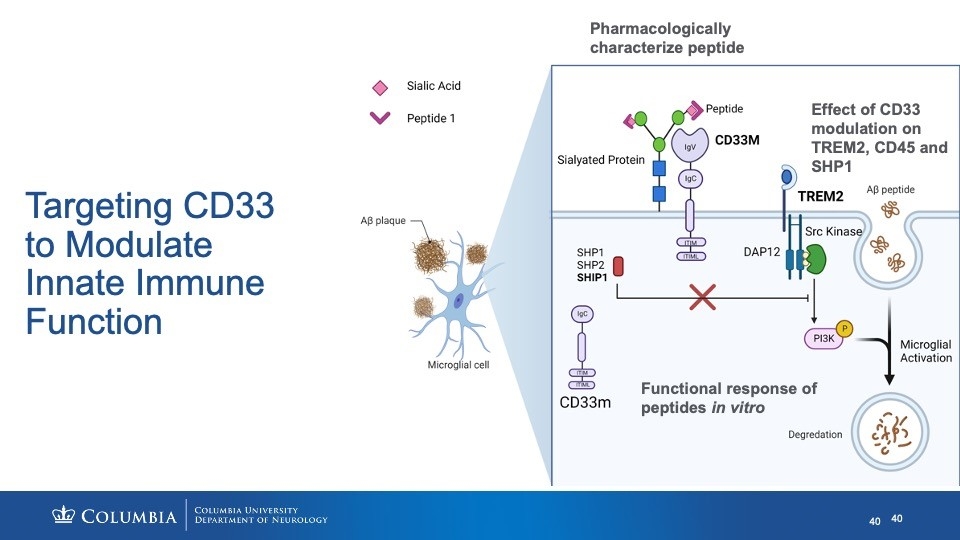You are here
Therapeutically Targeting the Innate Immune System in Alzheimer’s Disease
Speakers
Abstract
Genome-wide association studies have identified and validated the innate immune gene CD33 as associated with Alzheimer’s disease (AD) susceptibility. CD33 is a sialic acid-binding protein expressed on the surface of myeloid cells, and higher CD33 expression levels in the brain have been associated with more advanced cognitive decline and AD. Individuals with the AD-associated rs3865444CC risk genotype have increased expression of full-length CD33, the isoform containing the sialic acid-binding domain, compared to those with the rs3865444AA protective genotype which lacks this domain. Using a novel glycan-photocrosslinking strategy and mass spectrometry we identified immune cell-specific sialic acid-dependent and independent CD33 binding partners, including CD45. We have validated CD45 as a sialic acid-specific binding partner for CD33 and demonstrate that CD33 modulates CD45’s phosphatase activity via its sialic acid-binding domain, demonstrating a functional interaction. To disrupt the binding of CD33 to its sialidated partners, we designed a competitive inhibitor 12-mer peptide. We found this peptide was able to disrupt CD33 binding and modulate functional outcomes in vitro and clear amyloid plaques in vivo. This is an example of the approach we are taking to translate genetic associations into therapeutics for neurodegenerative diseases. In conclusion, we have identified and validated the functional relevance of CD33 binding partners that are specific to the sialic acid-binding domain of CD33, the domain that is modulated by the AD genetic association and designed a tool compound to modulate it.


